Trees Birds Mammals Fish Amphibians Reptiles
Wild Algarve
Bookshop
Auricularia mesenterica (Dicks.) Pers. - Tripe Fungus
Phylum: Basidiomycota - Class: Agaricomycetes - Order: Auriculariales - Family: Auriculariaceae
Distribution - Taxonomic History - Etymology - Identification - Culinary Notes - Reference Sources
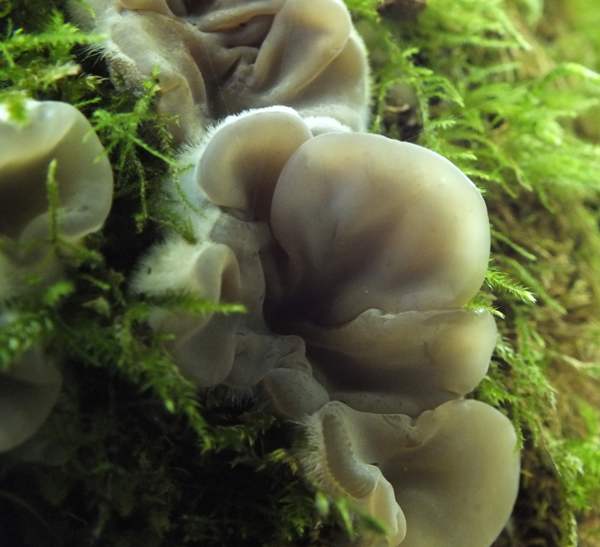
Auricularia mesentericais mainly seen in summer and autumn. It occurs most commonly on dead elm trees and on
fallen elm trunks and branches, and so was particularly common after Dutch elm disease had ravaged the elms of Britain and Europe during the second half of the 20th century.
The so-called Jelly Fungi are not really a taxonomic group but more a rag-tag of basidiomycetes with jelly-like textures, although few are a soft as the jelly we eat with custard.
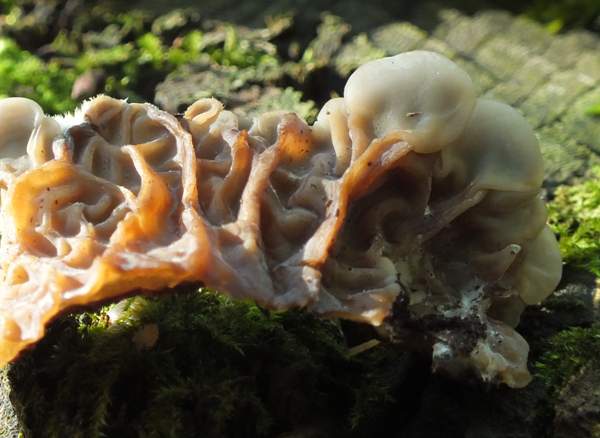
Tripe Fungus is quite variable in appearance, depending on the state of decay of its host timber as well as the developmental stage of the fruitbodies. Like most if not all jelly fungi, Auricularia mesenterica generally favours damp shady sites.
Distribution
Fairly frequent in Britain and Ireland, but most often recorded in southern England, Tripe Fungus occurs also in many countries of mainland northern and central Europe and is present in parts of Australia. I have found one reference (B. Looney et al) to this species in North America.
Taxonomic history
Tripe Fungus was described scientifically in 1785 by British mycologist James J Dickson (1738 - 1822), who gave it the binomial scientific name Helvella mesenterica.
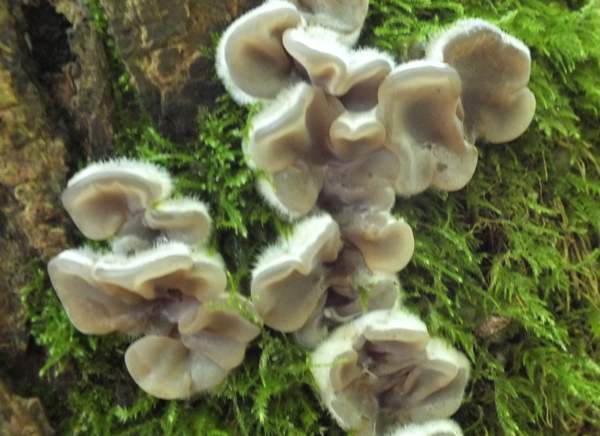
The currently-accepted scientific name Auricularia mesenterica dates from an 1822 publication by Christiaan Hendrik Persoon.
Among the many synonyms of this rubbery woodland fungus are Helvella mesenterica Dicks., Tremella violacea Relhan, Auricularia tremelloides Bull., Auricularia corrugata Sowerby, Gyraria violacea (Relhan) Gray, Stereum mesentericum (Dicks.) Gray, Auricularia lobata Sommerf., and Tremella corrugata Schwein.
Etymology
Auricula is a Latin word meaning ear - a reference to the ear-like shape of mature fruitbodies of most fungi in this small genus. The specific epithet mesenterica is a latinised adjective derived from the Ancient Greek word mesenterion meaning 'middle intestine'. (Now you surely must realise that I really am talking a load of tripe!)
Auricularia mesenterica, commonly known as Tripe Fungus (but in the past quite often referred to as the Grey Brain Fungus), is
the type species of the genus Auricularia.
Identification guide
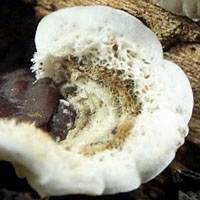
|
Fruitbody
Bracket-like but attached only loosely to the host timber, the fruitbodies start off as pale rubbery buttons but expand to typically 3 to 7cm across, often merging into compound structures sometimes running along fallen trunks and branches for more than a metre.
The upper (infertile) surface of the lobed fruitbody is
downy or hairy and zoned in various concentric bands of purple, brown, ochre, grey and white. |
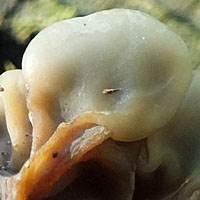 |
The fertile underside is initially smooth with a whitish bloom, but it becomes wrinkled and reddish-brown to ochre with age.
Inside the fruitbody the flesh is gelatinous but rubbery - so tough that it is usually much easier to tear the whole of a fruitbody from its substrate than to remove just a small piece. |
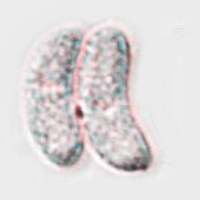 |
Spores
Sausage shaped (allantoid), 15-17 x 6-7µm.
Spore print
White. |
Odour/taste |
Not distinctive. |
Habitat & Ecological role |
Saprobic, on deciduous hardwoods particularly dead and decaying elms and Beech; very occasionally on living trees. |
Season |
Auricularia mesenterica can be found throughout the year, but it is most prevalent in late
summer and autumn. |
Similar species |
Auricularia auricula-judae, commonly known as Jelly Ear Fungus, is nearly always found on dead Elder. |
Culinary Notes
Although tripe is edible when cooked, Tripe Fungus is not. Most field guides record this jelly-like fungus as inedible because it is tasteless, tough and leathery rather than perilously poisonous.
Reference Sources
Fascinated by Fungi, 2nd Edition, Pat O'Reilly 2016, reprinted by Coch-y-bonddu Books in 2022.
Brian P. Looney, Joshua M. Birkebak, and P. Brandon Matheny (2013). Systematics of the genus Auricularia with an emphasis on species from the southeastern United States; North American Fungi Vol 8, No 6, pp 1-25.
Dictionary of the Fungi; Paul M. Kirk, Paul F. Cannon, David W. Minter and J. A. Stalpers; CABI, 2008
Taxonomic history and synonym information on these pages is drawn from many sources but in particular from the British Mycological Society's GB Checklist of Fungi.
Top of page...
Fascinated by Fungi. Back by popular demand, Pat O'Reilly's best-selling 450-page hardback book is available now. The latest second edition was republished with a sparkling new cover design in September 2022 by Coch-y-Bonddu Books. Full details and copies are available from the publisher's online bookshop...